Mollusca
Freshwater molluscs including gastropods (snails), bivalves (clams) and limpets could be readily identified by hard shell enclosing a soft, unsegmented body. Family-level identification is possible based on shell characteristics alone, but greater taxonomic resolution may require dissection of the body, especially the structure of genitalia.
Are they freshwater or terrestrial snails?
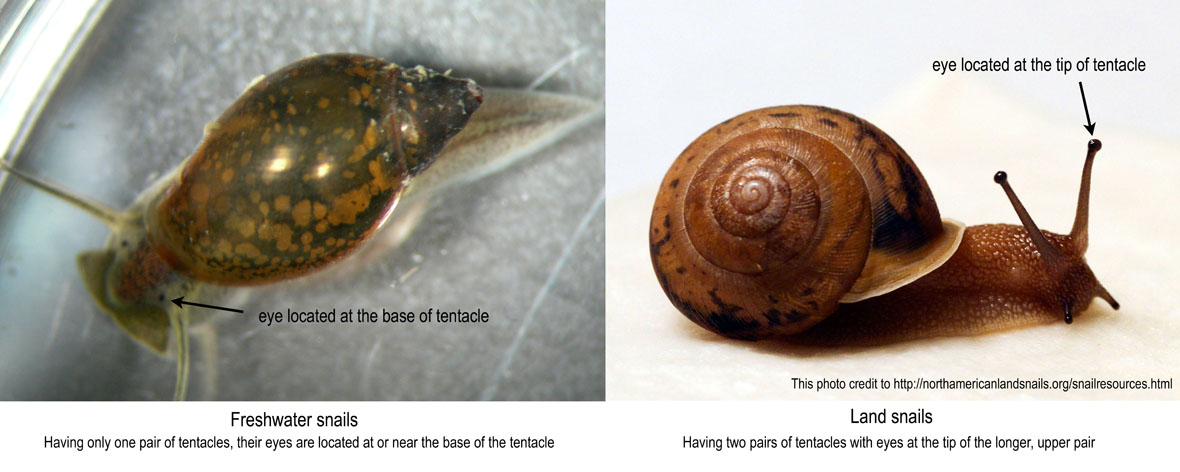
Gastropoda - Prosobranchia (gills in front of the heart, snails with an operculum)
Ampullariidae - Pomacea canaliculata is the single species found in Hong Kong
Shell large, may exceed 50mm, strongly globose (apple-shaped) with the shell spire depressed. Growth lines on the outer portion of operculum are concentric (i.e. the inner ones are enclosed by the outer ones). |
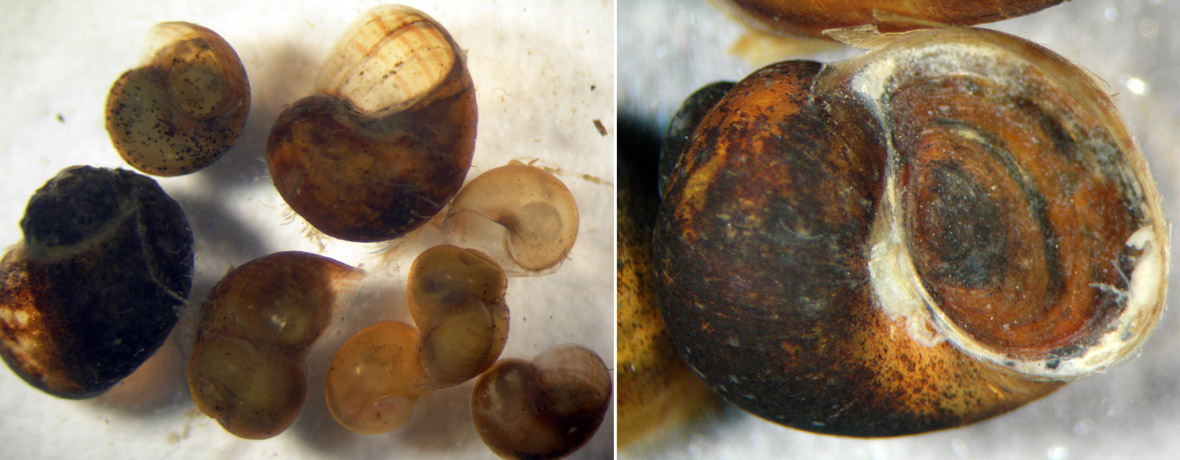 |
|
Bithyniidae
Shell generally <15mm long and rather inflated or globose. Growth lines on the outer portion of the operculum are concentric. |
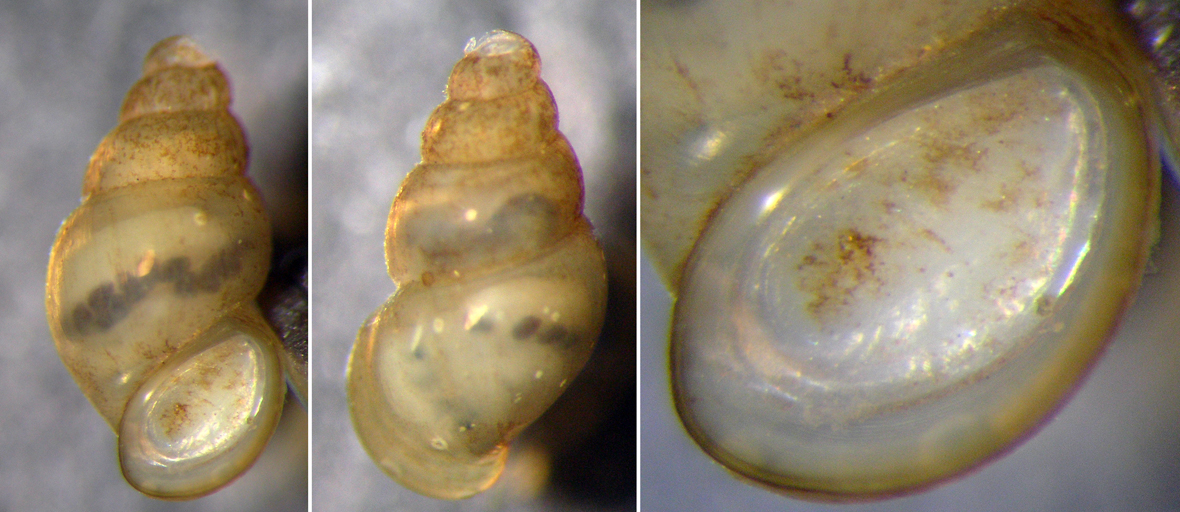 |
|
Neritidae e.g. Clithon retropictus
Shell typically cap-shaped. Body whorl is large and the spire is small or torn. Shell aperture usually semicircular with small teeth on the inner margin. |
 |
|
Pachychilidae e.g. Sulcospira hainanensis
Shell smooth, conical and large, up to 3cm. Older individuals are brown-black and younger individuals are paler and striped. The tip of the shell in older specimens is often incomplete. Growth lines on the operculum are arranged in a spiral. |
 |
|
Viviparidae e.g. Sinotaia quadrata
Shell large and subglobose. Growth lines on the outer portion of operculum are concentric. |
 |
|
Pomatiopsidae e.g. Tricula spp.
One of two pomatiopsid subfamilies, the freshwater Triculinae, is confined to Asian. Shell usually small, less than 10mm long, but shell form might be variable. Growth lines on the operculum are arranged in a spiral. |
 |
|
Thiaridae - e.g. Melanoides tuberculata
Shells of adults usually >12mm long, usually elongated (i.e. narrowly conical or 'carrot-shaped'), typically in five whorls and sculpted with vertical weakly curved ribs. The aperture may be small relative to the total shell length. Growth lines on the operculum are arranged in a spiral. |
 |
Gastropoda - Pulmonata (able to breathe air by lungs instead of gills)
Ancylidae - e.g. Ferrissia baconi
Shell uncoiled, small (< 6mm long) and broadly cone-shaped. |
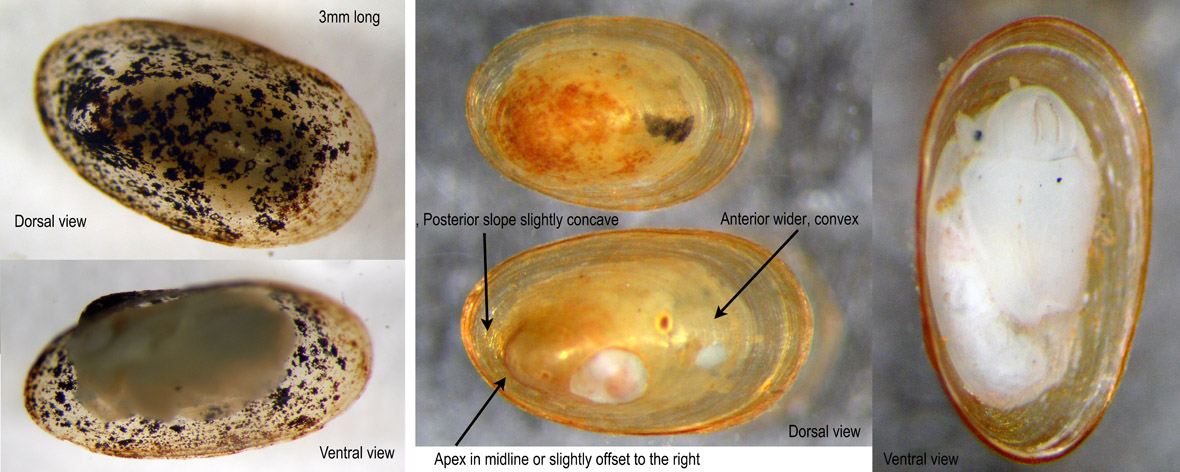 |
|
Lymnaeidae e.g. Radix plicatulus
Shell dextrally coiled (right-handed) and globose or subglobose. The shell is light or dark-brown,a little bit reddish; the body is black with pale spots. |
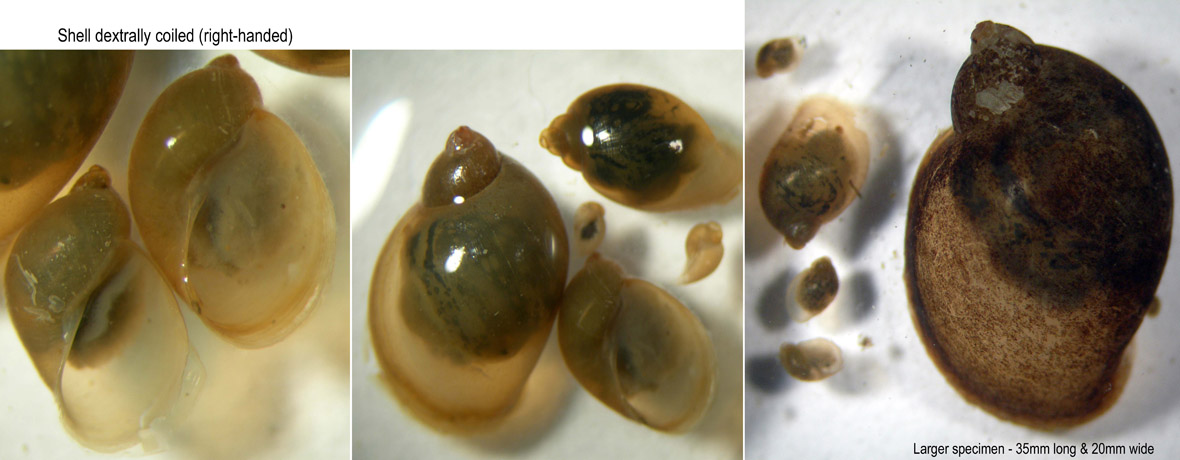 |
|
Physidae e.g. Physella (=Physa) acuta
Shell sinistrally coiled (left-handed) and globose or subglobose.
The body is black with pale spots. Pouch snails generally indicate nutrient enriched conditions and poor water quality. |
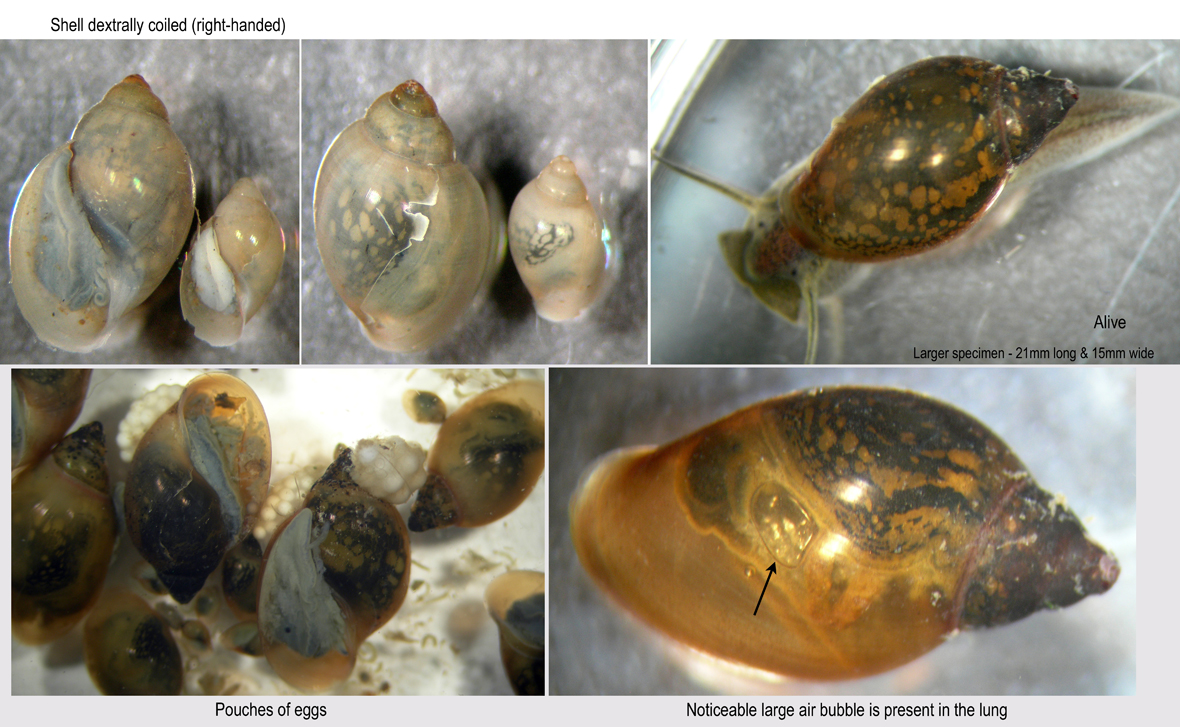 |
|
Planorbidae
Shell planispiral alike a ram's horn and coiled in one plane. |
e.g. Biophalaria straminea is an intermediate host of human
parasitic blood fluke, Schistosoma
mansoni. |
 |
e.g. Gyraulus convexiusculus is very common and widely distributed globally, originated in Southeast Asia. It is an intermediate host of many trematode parasites, Echinostoma spp. |
 |
Bivalves
Corbiculidae e.g. Corbicula fluminea
Shell of two equal valves with well-developed concentric ridges. The outer surface is yellowish brown while the inner surface is purple. Adults are ~25mm long. |
 |














